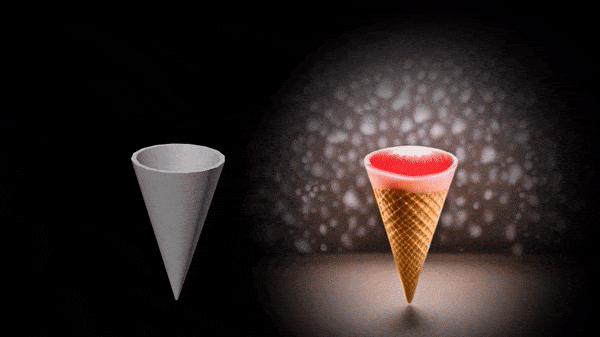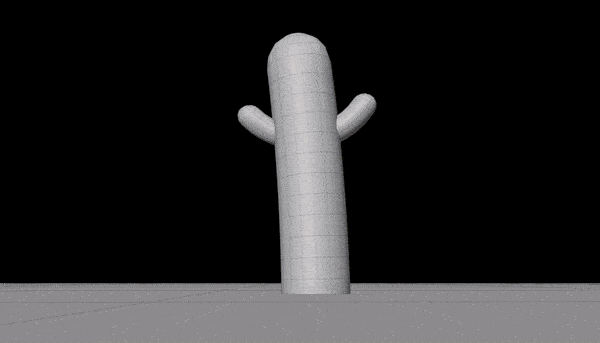Can A.I. help me in my 3D animation proces?
As a designer, I’ve had an uneasy gut feeling about AI for a while now. On one hand, I hear concerns from people around me who see it as a threat—a threat to their passion and profession. On the other hand, there’s plenty of optimism from those who believe it will make our lives easier. Personally, I think the truth lies somewhere in the middle, though no one—not even AI—can predict the future.
I’ve seen countless AI-generated images circulating online. Some are so convincing they could even fool trained CGI artists. Others are surprisingly stunning, created with what seems like incredible speed. As 3D designers, we all know the immense effort it takes to build a hyper-realistic scene—paying close attention to detail, cinematography, and lighting. Not to mention the rendering time required to bring such images to life.
Can AI already assist us in dressing up our scenes? Is it truly as simple as pressing a single button to transform a gray 3D cube into a vibrant, organic coral reef teeming with life?
I decided to put it to the test and spent an evening experimenting with AI tools in Runway. My goal was simple: to find out just how easy it is to transform basic 3D animations—built with primitive objects in Cinema 4D—into stunning, animated visuals.
Below, you'll find my experiments and personal conclusion.
1. Simple grey cubes transformed into skyscrapers.
2. Complex dynamics animation of a dog transformed into horrific wolf
3. Separated “ingredients” for a tasty cheeseburger?
4. A cone and two spheres of icecream
5. A simple bending deformer and no camera movements to create a convincing swinging cactus?
For my first experiment, I wanted to see if I could transform a few simple blocks into a vibrant, futuristic metropolis teeming with life, using only animated camera movement. I used a similar prompt for this experiment and was pleasantly surprised by the results. The camera movement remained intact, and the system understood that the cubes were meant to represent skyscrapers. I was also impressed by the vast range of output options in countless different styles. (I won’t show them all here, but it’s easy to lose yourself for hours hitting 'regenerate,' as the results are stunning and consistently unique.) This is also my biggest frustration. You have absolutely no control. And while the options are endless, I couldn’t find a single result that met my vision 100%. For instance, I wanted office lights in the skyscrapers to flicker on and off, and I hoped to include streets, cars, and a bustling infrastructure on the ground.
For my second experiment, I wanted to see if I could reimagine a slightly more complex animation—a dog—into a completely different style. The result from the very first 'generate' was stunning. I aimed for a 'horrific wolf in a dark forest' vibe, and while the animations did some strange things (the eyes morphed in odd ways), I thought the final look was quite fun. Honestly, it could work as a unique film style. The downside, once again, is the lack of control. Before you know it, you’re spending days on post-production, and at that point, you might as well have created it yourself. So, the verdict for this animation: surprisingly fun and great for inspiration, but not what I envisioned and ultimately not usable for a finished product.
For my third experiment, I wanted to see if I could transform a simple animation with basic shapes into a convincing, tasteful cheeseburger. Unfortunately, I couldn't pull it off in Runway. A bit of a disappointment. While the final frame does resemble a cheeseburger (whether it looks appetizing is another question), the animation itself was a flop. I couldn’t get the prompt right to show a half sandwich without toppings, followed by the sequence of: lettuce, burger, cheese, tomato, and finally the top bun. I even tried helping the system by providing the animation in color. No luck.
Alright, moving on to dessert: an ice cream. I thought this would be simpler—a cone with two animated scoops. And while the ice cream didn't do as many weird things with the ingredients as the cheeseburger did, I still couldn't manage to treat myself to stracciatella and pistachio. What also frustrates me is that in none of the results did I get razor-sharp images. Every time, those blurry morphing pixels show up.
For my final experiment, I wanted to transform a super simple bending deformation animation of a cylinder into a swinging giant cactus in a dramatic desert setting. While the first frame looks fantastic, the animation quickly turns into a mess of smudges and uncontrollable light effects. If you just want a quick cactus image generated from a cube, this works fine. But if you're looking for a moving cactus? You’d be better off making it yourself.





